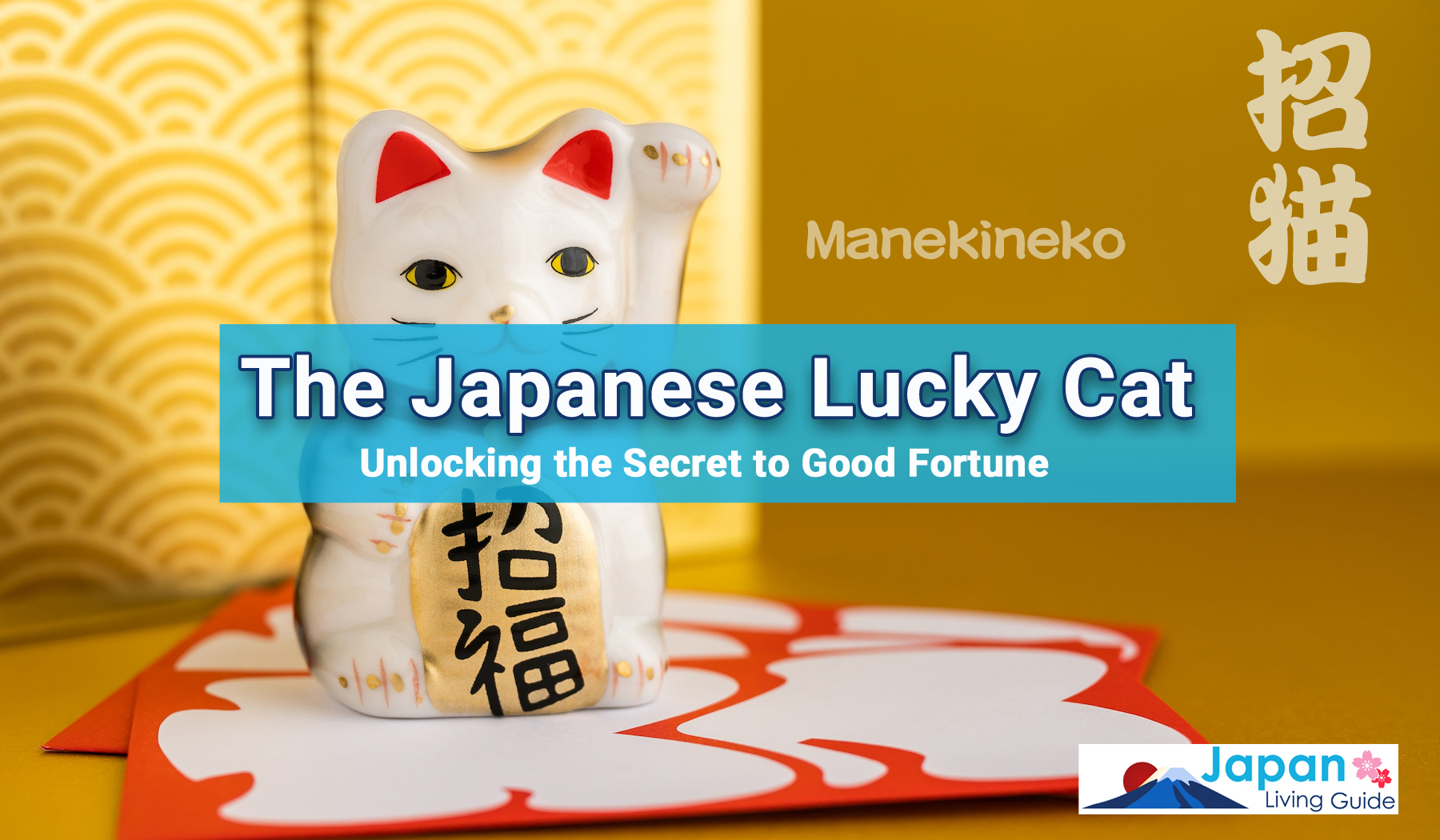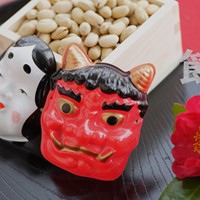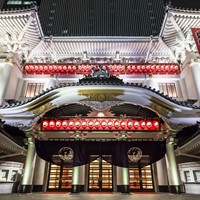The Japanese Lucky Cat: Unlocking the Secret to Good Fortune

This page contains affiliate links.
The maneki neko statue, also known as the lucky cat, is a symbol that is instantly recognizable all around the world. You can find these lucky cats in businesses, homes, and restaurants from Japan to Europe and the United States. But did you know that the maneki neko has a rich history and deep meaning in Japanese culture? The name alone, maneki neko, translates to beckoning cat and holds a compelling origin story. Join us as we delve into the fascinating world of the maneki neko and uncover the secrets behind this iconic symbol.
Origin of the Maneki Neko Statue

The most well-known origin story of the maneki neko takes place in Edo Period Tokyo. In Setagaya, the temple of Gotoku-ji was looked after by a single monk. The regional ruler of Hikone, Ii Naotaka was on a hunting trip in the area when it started to rain. He was sheltering under a tree when he saw a cat beckon him into the temple. As soon as the ruler left that spot, it was struck by lightning. Grateful to the cat for saving his life, the ruler became a patron of the temple and the cat was enshrined.
The cat is represented as a Japanese bobtail sitting up and beckoning with one paw. This temple, known as the "cat temple," is still standing in Tokyo today.
It is thought that the first maneki neko statue was produced in Asakusa in Tokyo in the 1800s. An old woman gave up her cat as she no longer had the money to feed it. The cat appeared in her dreams and told her that if she made pottery in his image, she would receive good fortune. The woman did so and started selling them at the gates of Imado Shrine. The cat figures were very popular and brought her the good fortune promised her.
The modern maneki neko appears to be some combination of the two tales.
Maneki Neko: Color Meanings

Maneki nekos are generally known to bring good luck and fortune. However, there are more specific meanings to each colour of maneki neko and the various benefits it can bring. The placement of the cat can also influence the luck and benefits brought to the owner. As a general rule, the maneki neko should be placed in a busy area. The cat is said to love people, so should be placed where it can see and be around people. This is often the entrance to a business, an entrance or living room in a house, or the most used room of a house.
The most common colors of maneki neko include:
Calico Maneki Neko for Luck
The original maneki nekos were always calico or white and so these are the most common. Calico is often said to be the luckiest colour.
White Maneki Neko for Positivity and Happiness
As mentioned, white is also extremely common and is considered to bring general luck. It can also be thought to represent happiness and purity.
Black Maneki Neko for Home Safety & Warding off Evil
The black maneki neko is supposed to be good for warding off evil and subsequently for the safety of the home. This is because the colour black can’t be changed by other colours, representing the refusal of the cat to be influenced by evil. A black maneki neko should be placed at the entrance to the house to prevent evil from entering.
Gold Maneki Neko for Fortune and Success
A gold maneki neko is also very common. Gold represents financial success and luck in business, bringing fortune to the owner. The rules of Feng Shui say it is best to place this maneki neko on the west side of the house for the best impact.
Red Maneki Neko for Health and Longevity
Red is a common color for amulets and talismans and is said the be best for maintaining health and keeping away illness. This should also be placed at the entrance of the house to prevent illness from entering.
Pink Maneki Neko for Love
A pink maneki neko is ideal for romance and fulfilling love. Often considered the color of both love and rejuvenation, this cat is best for both finding and maintaining romantic relationships.
Blue Maneki Neko for Intelligence
A blue maneki neko represents intelligence and academic achievement to hopeful students. The color is also thought to help bring calm judgment, and so is sometimes used to represent traffic safety.
Green Maneki Neko for Peace of Mind
The green maneki neko is intended to bring peace of mind. Usually, this entails safety for the family both at home and away from home.
Meaning Behind the Beckoning Paws

While the different colors of maneki neko can have different meanings and benefits, this is not the only difference of note. There are different meanings behind which paw is raised as well as how long the paw is. If the paw reaches above the top of the cat’s ear, the holder will reap long-term benefits, while a shorter paw is indicative of finding luck in the short term.
Right Hand Waves in Money
A maneki neko with the right hand raised is said to be a male cat, said to be best for attracting money and financial success. The right hand signifies money and fortune.
Left Hand Waves in People
If the maneki neko has the left hand raised, it is said to be a female cat, intended to attract people and good relationships. Many businesses have a left-hand-raised cat to attract good ongoing customers.
Both Hands Raised
A cat with both hands raised is supposed to attract both money and good relationships. While this may seem like a catch-all and the best way to have it all, it is the rarest type of maneki neko.
What is the Maneki Neko Holding?
Most maneki neko are wearing or holding items. These have significant meanings and the meanings can change depending on what the cat is holding. Some of the most common items include:
Neck Decorations
Pet cats during the Edo Period commonly wore collars with bells, indicating their owner's wealth, so owners could keep track of them.
Bib
Some maneki nekos wear a bib, similar to the jizo statues in temples or shrines, indicating protection.
Coins
Most maneki nekos can be seen holding a koban, a coin worth 1,000 USD, symbolizing wealth and fortune. The koban sometimes says 千万両 (10 million ryo), a very large amount of money, especially for the time.
Fish
A carp or similar fish symbolizes strength, vigor, wealth, and abundance.
Money Bag
A clear symbol of wealth and luck.
Marble or Gem Stone
Representing wisdom and wealth.
Fan or Drum
Luck in business, with drums symbolizing an overflowing of customers.
Hollowed Gourds (hyoutan)
Japanese sake barrels commonly depicted with Fukurokujo, one of the Seven Lucky Gods, bringing good luck and warding off evil.
Daikon radish
Symbolizes wealth and good luck.
Where to Find Them
There are several places to visit that are ideal for learning more about maneki nekos, seeing a wide variety of them, or simply enjoying their presence. One of the first places to visit is the Gotoku-ji temple, the origin of the maneki neko legend and home to thousands of figures of varying sizes. Located in Tokyo, this is an easy addition to any Japan trip.
If you want something different, try visiting Manekineko-Dori street in Tokoname City in Aichi. This street features dozens of maneki neko statues all along the road. There is a wide variety of maneki neko types and sizes.
Another great place to visit is the Maneki neko Museum of Art in Okayama. This museum displays over 700 maneki nekos from various parts of history and regions, along with many unique and captivating pieces.
If you're in the US, there is also the Lucky Cat Museum in Cincinnati, Ohio. This museum has over 2,000 versions of the maneki neko and plenty of information about the various figures.
You can also get them online.
More Than Just a Cute Cat Statue
The maneki neko is more than just a cute cat statue. It symbolizes a rich history and cultural significance. From the story's origins, the meaning behind the raised paw, and the various decorations, each aspect holds unique symbolism. Understanding these meanings can add more depth to your appreciation of the Japanese lucky cat and Japanese culture in general. The next time you see one of these charming figures, you'll know it represents more than mere good luck.
For more in-depth information on the many faces of Japanese culture, please check out our wealth of articles on the subject here!
















